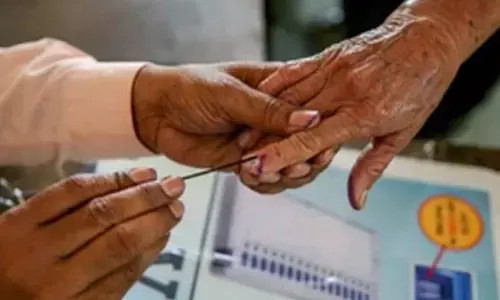Cultural imperialism cornerstone for Telangana statehood

Cultural imperialism cornerstone for Telangana statehood
Beyond doubt, no one in the present day is chastely one thing
Beyond doubt, no one in the present day is chastely one thing. Tags like Telanganite, Hindu, Indian, etc, are not over and above startingpoints, which if followed into an involvement for only aninstant are quickly left behind. Imperialism amalgamated the combination of cultures and identities on a global scale. But its worst and most paradoxical flair has been to allow people to believe that one segment of people is only superior. Nonetheless, just as human beings make their history, they also strive to make their cultures and ethnic identities — the stretched movement for Telangana statehood is a good example.
As it is evident through Edward D. Said’s book, “Culture and Imperialism,” no one can deny the persisting continuities of long traditions, sustained habitations, national languages, and cultural geographies, but there seems no reason except fear and prejudice to keep insisting on their separation and distinctiveness as if that was all human life was about. Survival is about the connections between things.
Indubitably, cultural imperialism is one of the dominating factors behind the Telangana Movement among various other significant factors that led to a long struggle for statehood — an expedition for Telangana state. As observed by Michael Bassey Johnson in his book, “Night of a Thousand Thoughts,” one needs to make an expedition to his mind, for it is the most rewarding journey, and here is that rewarding journey!
Erstwhile Hyderabad state made up of 16 districts — 8 Telangana districts, 5 Marathwada districts and 3 districts of Karnataka — had been under the rule of Nizam from 1724 to 1948, accounting for 224 years. While India got its independence on August 15, 1947, the people of Hyderabad state got their independence on September 17, 1948, with the intervention of the then union home minister of India, SardarVallabhbhai Patel. Subsequently, the 8 districts of Telangana were merged with Andhra State for the formation of a new state of India — Andhra Pradesh.
Paradoxically, the state of Andhra Pradesh was formed on November 1, 1956, ignoring the wishes of the majority of people from 8 districts of Hyderabad state, against a categorical recommendation of the States Reorganization Commission (SRC) and contrary to the views of the supreme leader of the time, Jawaharlal Nehru. As a result, the people of the Telangana region went on regular agitations, more prominently from 1969 with a pause in between.
More recently, the agitation took its second and strong trample in the year 2009. Owing to the demands of the people of the Telangana region, the Central Government of India announced the statehood ofthe Telangana region on December 09, 2009
Going back into history, the erstwhile Hyderabad state got its independence on September 17, 1947, thirteen months after India got its independence; and the oppressed people of this region started feeling a sigh of relief. Even though Hyderabad state got its independence and joined the Indian Union, there was no separate government for the people of this region till state assembly elections were conducted in India, in 1952. In these elections, the Indian National Congress emerged as the winning party with 93 seats in Hyderabad state. DrBurgula Ramakrishna Rao got elected as the first chief minister of Hyderabad state. From October 19, 1952, Potti Sriramulu went on indefinite strike seeking a separate state for Andhra people with a share in Madras City, present-day Chennai. Consequently, on October 1, 1953, Andhra State emerged as a new state of India with Kurnool as its capital.
Even the Prime Minister of the time, Jawaharlal Nehru, was also not in favour of merging Telangana districts with the Andhra state. He ridiculed the demand for Visalandhra as an idea bearing a tint of expansionist imperialism. Yet, paradoxically, the state of Andhra Pradesh was formed on November 1, 1956.
The Gentlemen’s Agreement of 1956 was scuttled in various means and forms beginning from the very same day on which the state was born. This resulted in a massive revolt of the people of the region in 1968-69 demanding the separation of Telangana from the state of Andhra Pradesh.
K Chandrasekhar Rao, the president of Telangana RashtraSamithi (TRS) and the first chief minister of Telangana state, began a hunger strike on November 29, 2009, demanding a separate Telangana state. On the eleventh day of K Chandrasekhar Rao’s indefinite fast for Telangana, on December 09, 2009, the union government emerging after a late-night meeting at Prime Minister’s residence announced that the process of formation of a separate state of Telangana was being set into motion.
From December 2009 till the formation of the Telangana state, many developments took place in the Telangana movement. On July 30, 2013, The Congress-led United Progressive Alliance took its final decision on bifurcating Andhra Pradesh and creating a separate Telangana state.
It was on Feb 20, 2014, the Andhra Pradesh reorganization bill was passed in either house of the Parliament. Following the official announcement of statehood for Telangana, the announcement of General Elections was also made.
At last on June 2, 2014, Telangana emerged as the 29th state of India. Yes, this is a very long expedition that has taken its journey on the cadavers of the martyrs of statehood.
(The writer is an Air Veteran turned independent researcher and author of 20 Mass Media Books)




















